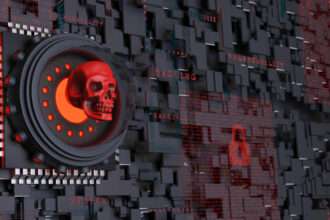Ransomware hasn’t gone away, but its business model has fundamentally changed. In 2025, cybercriminals are far less concerned with locking up your data. Their real leverage comes from stealing data first—then threatening to leak it, auction it, or hand it to competitors unless you pay up. The extortion game has shifted from simple decryption keys to catastrophic data exposure, regulatory crisis, and brand-destroying consequences.
- The Evolution: From Encryption to Exfiltration
- How Modern Attacks Work in Practice
- Case Studies: 2025’s Most Damaging Incidents
- The Modern Ransomware Stack: Tactics and Tools
- Economic & Regulatory Impact
- Defensive Playbook for 2025 and Beyond
- 1. Data Discovery and Classification
- 2. Monitor for Exfiltration and Anomalies
- 3. Harden Identity and MFA
- 4. Restrict Data Access and Egress
- 5. Create a Surge-Ready Incident Response Plan
- 6. Implement and Test Endpoint and Network Detection & Response
- Conclusion: Assume Your Data Will Be Stolen
The Evolution: From Encryption to Exfiltration
Historically, ransomware meant just that: malicious software infiltrated your network, encrypted files, and demanded a ransom payment for the decryption key. If you had robust backups, you could restore operations (eventually) and refuse to pay.
But as organizations improved backup strategies, attackers adapted. The solution? Steal sensitive data just before, or instead of, encryption, and threaten to expose it if ransom isn’t paid.
According to Allianz Commercial’s 2025 Cyber Risk Trends, 40% of the value of large cyber claims in the first half of 2025 involved data exfiltration—a huge leap from 25% in 2024.
Double and Triple Extortion Defined
- Double extortion: Encrypting data and exfiltrating files, then threatening to release or sell those files if the ransom is not paid.
- Triple extortion: Adding additional threats—such as DDoS attacks, or contacting third parties whose data was compromised—layering pressure on the primary victim.
In 2025, double and triple extortion are the norm, and “pure” ransomware attacks (encryption only) are now the minority.
How Modern Attacks Work in Practice
- Attackers gain entry through phishing, exploiting known vulnerabilities, or purchasing access from initial access brokers.
- Lateral movement and privilege escalation give them access to high-value systems and sensitive data repositories.
- Before launching ransomware, attackers exfiltrate gigabytes or even terabytes of sensitive information—often slowly and in stealth mode, to evade detection.
- Ransom demand follows, with clear proof that the criminals possess valuable data. If no payment, the threat escalates: public leak sites, data auctions, or direct outreach to affected third parties or media.
Notable groups—including Clop, LockBit, BlackCat, and RansomHub—operate dedicated dark web leak sites and even issue press releases about upcoming “data dumps.”
Recent attacks have targeted insurance companies, hospitals, banks, and national infrastructure, sometimes bypassing encryption altogether because exfiltration is more profitable and harder to remediate.
Case Studies: 2025’s Most Damaging Incidents
- MetLife (Latin America): Criminals breached regional branches, exfiltrated over 1TB of sensitive policyholder data, and publicized auctions for portions of the dataset on leak forums after partial nonpayment.
- American Standard: Attackers stole 400GB of design and supply-chain data, using both encryption and leak threats. Third-party vendors whose data was present in the breach were also contacted for extortion.
- MOVEit Mass Breach: Over 1,000 companies—banks, healthcare groups, government agencies—saw patient records, legal data, and even classified documents exfiltrated and posted online or sold in batches.
These cases resulted in not just direct ransom costs, but regulatory penalties, class action lawsuits, and incalculable brand damage. According to Veeam’s 2025 survey, up to 60% of companies attacked in the past 24 months reported audit or notification costs exceeding the ransom itself—sometimes by a factor of three or more.
The Modern Ransomware Stack: Tactics and Tools
Today’s extortion operations blur the line between APTs, criminal brokers, and ransomware groups:
- Highly targeted phishing campaigns aided by AI craft the initial lure. Social engineering remains the dominant entry point (Rapid7, 2025).
- Ransomware-as-a-Service (RaaS): Affiliate groups “subscribe” to use powerful extortion platforms, outsourcing malware operations to distributed partners for a cut of profits.
- Data exfiltration via dual-use tools: Attackers use legitimate software (Rclone, MEGA/Dropbox clients, legitimate remote access tools) to quietly stage and export data to attacker-controlled cloud accounts (Exabeam, 2025).
- Compression and encryption tools: WinRAR, 7-Zip, backup utilities, and script-based automation are repurposed to package and transmit extracted data.
- Stealth and evasion: To evade detection, exfiltration tools are renamed, logs scrubbed, and traffic disguised to mimic legitimate backup activity.
This technical sophistication is backed by an aggressive PR approach: leak sites, countdown timers for data releases, and even direct outreach to journalists and regulators escalate pressure on victims.
Economic & Regulatory Impact
The costs of attacks have exploded. By 2025, the frequency and financial scope of exfiltration-driven extortion is staggering:
- Average ransomware incident cost hit $3.7 million, up 440% from 2019 (Morphisec, 2025).
- Class action lawsuits and regulatory fines—especially from GDPR and CCPA—add millions in additional costs if protected data is exposed.
- In the MOVEit campaign alone, dozens of affected companies saw their stock prices tumble after exfiltration disclosures; legal costs and settlements (especially when PII or health data is involved) can eclipse the headline ransom demand.
This is not just a technical security problem—it’s now a board-level and existential business issue.
Defensive Playbook for 2025 and Beyond
1. Data Discovery and Classification
Know where all sensitive data lives (PII, PHI, financial data, trade secrets, M&A materials). Data mapping and labeling are prerequisites for detection and response.
2. Monitor for Exfiltration and Anomalies
- Continuous monitoring of outbound traffic for anomalous spikes, connections to new destinations (especially file-sharing/cloud platforms), and unexpected timing.
- Alert on use of known data-mover tools (Rclone, cloud drive APIs, dual-use admin software).
- Watch for excessive compressions or encryption on file servers—attackers stage data prior to exfiltration.
3. Harden Identity and MFA
Most attacks still begin with phishing and compromised credentials. Enforce phishing-resistant multi-factor authentication (FIDO2, hardware keys). Lock down admin accounts, especially for third-party RMM (Remote Monitoring & Management) tools.
4. Restrict Data Access and Egress
- Apply least-privilege controls universally—not just for users, but for system accounts and service accounts.
- Block or tightly monitor outbound file transfers to unauthorized cloud services and storage platforms.
- Review firewall and proxy configurations for any overlooked egress holes.
5. Create a Surge-Ready Incident Response Plan
Practice not just backup restoration, but data breach investigation, notification, and legal response. Designate spokespeople and train staff for rapid messaging in the event of leaks or extortion campaigns.
6. Implement and Test Endpoint and Network Detection & Response
Make sure security tools aren’t just tuned to detect encryption events, but also look for staging, packaging, and outbound movement of large files.
You can’t rely on perimeter defenses and hope for the best. In 2025, data exfiltration is the norm, not the exception.
Proactive data security, cross-organization cooperation, and legally sound response plans are essential for organizational survival.
Conclusion: Assume Your Data Will Be Stolen
The ransomware threat has evolved at breakneck speed but the defensive mindset is still lagging. Recovery from backups is necessary but no longer sufficient. If you can’t detect and prevent sensitive data exfiltration, your risk isn’t downtime—it’s existential catastrophe: regulatory fines, reputational ruin, customer loss, and financial disintegration.
Invest in modern data discovery, real-time monitoring, and exfiltration prevention. In 2025, when criminals say “Pay, or everyone sees your secrets,” they mean it. The time for board-level action is now.












